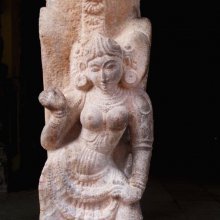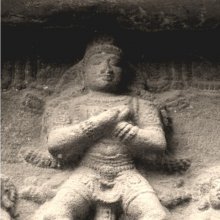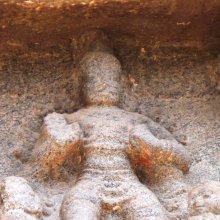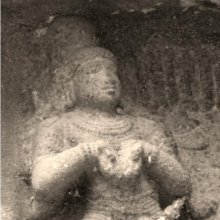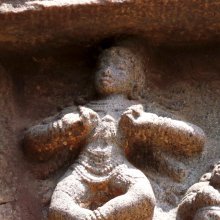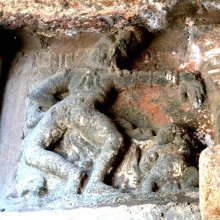Hastakarana, Hasta-karana, Hastakaraṇa: 1 definition
Introduction:
Hastakarana means something in Hinduism, Sanskrit. If you want to know the exact meaning, history, etymology or English translation of this term then check out the descriptions on this page. Add your comment or reference to a book if you want to contribute to this summary article.
Images (photo gallery)
(+1 more images available)
In Hinduism
Natyashastra (theatrics and dramaturgy)
Source: Wisdom Library: Nāṭya-śāstraHastakaraṇa (हस्तकरण) refers to the “movements of the wrist and hand”, according to the Nāṭyaśāstra chapter 9. The hands form a part of the human body which represents one of the six major limbs (aṅga) used in dramatic performance. With these limbs are made the various gestures (āṅgika), which form a part of the histrionic representation (abhinaya).
There are four class of hastakaraṇas defined:
- Āveṣṭita,
- Udveṣṭita,
- Vyavartita,
- Parivartita

Natyashastra (नाट्यशास्त्र, nāṭyaśāstra) refers to both the ancient Indian tradition (shastra) of performing arts, (natya—theatrics, drama, dance, music), as well as the name of a Sanskrit work dealing with these subjects. It also teaches the rules for composing Dramatic plays (nataka), construction and performance of Theater, and Poetic works (kavya).
See also (Relevant definitions)
Partial matches: Hasta, Karana.
Full-text: Parivartita, Vyavartita, Udveshtita, Aveshtita.
Relevant text
Search found 1 books and stories containing Hastakarana, Hasta-karaṇa, Hasta-karana, Hastakaraṇa; (plurals include: Hastakaranas, karaṇas, karanas, Hastakaraṇas). You can also click to the full overview containing English textual excerpts. Below are direct links for the most relevant articles:
Gati in Theory and Practice (by Dr. Sujatha Mohan)
Observations based on Nāṭyaśāstra < [Chapter 5 - Conclusion]
Gati in Maṇipurī < [Chapter 4 - Practice of Gati]
Elements of Āṅgika-abhinaya in Nāṭyaśāstra < [Chapter 1 - Nāṭya]
